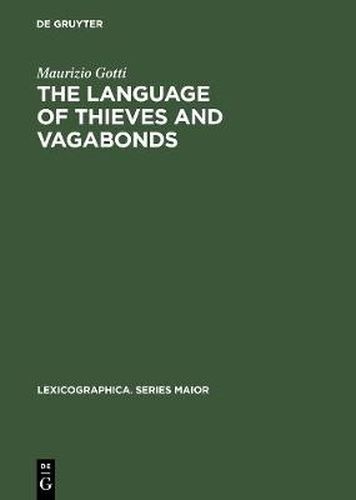Readings Newsletter
Become a Readings Member to make your shopping experience even easier.
Sign in or sign up for free!
You’re not far away from qualifying for FREE standard shipping within Australia
You’ve qualified for FREE standard shipping within Australia
The cart is loading…






This title is printed to order. This book may have been self-published. If so, we cannot guarantee the quality of the content. In the main most books will have gone through the editing process however some may not. We therefore suggest that you be aware of this before ordering this book. If in doubt check either the author or publisher’s details as we are unable to accept any returns unless they are faulty. Please contact us if you have any questions.
The object of the volume is the analysis of the main dictionaries and glossaries of the canting language (the particular jargon spoken by thieves and vagabonds) that appeared in the 17th and 18th centuries. The scholars’ attention has mostly concentrated on the earliest publications - particulary those appearing in the Elizabethan period -, while relatively little research has investigated subsequent canting dictionaries and glossaries. The aim of the present volume is to fill this gap. The main works on canting published in the 17th and 18th centuries are analysed in chapters 3 to 10. The first two chapters provide a necessary introduction to the investigation carried out in the subsequent sections, examining the great increase in the numbers of vagabonds and criminals in England in that period from a sociohistorical perspective and reviewing the 16th-century English literature about the underworld. The subsequent eight chapters give a detailed analysis of the main works on canting which appeared in the second part of the 17th century and during the whole of the 18th century. The specific features of each publication are identified, as well as the method adopted by its author in the compilation of his dictionary/glossary and the most likely sources of its entries, in order to determine the degree of novelty and relevance that his contribution has brought to this field. The final chapter deals with the evolution in the meaning of the term ‘cant’ itself in the period taken into consideration.
$9.00 standard shipping within Australia
FREE standard shipping within Australia for orders over $100.00
Express & International shipping calculated at checkout
This title is printed to order. This book may have been self-published. If so, we cannot guarantee the quality of the content. In the main most books will have gone through the editing process however some may not. We therefore suggest that you be aware of this before ordering this book. If in doubt check either the author or publisher’s details as we are unable to accept any returns unless they are faulty. Please contact us if you have any questions.
The object of the volume is the analysis of the main dictionaries and glossaries of the canting language (the particular jargon spoken by thieves and vagabonds) that appeared in the 17th and 18th centuries. The scholars’ attention has mostly concentrated on the earliest publications - particulary those appearing in the Elizabethan period -, while relatively little research has investigated subsequent canting dictionaries and glossaries. The aim of the present volume is to fill this gap. The main works on canting published in the 17th and 18th centuries are analysed in chapters 3 to 10. The first two chapters provide a necessary introduction to the investigation carried out in the subsequent sections, examining the great increase in the numbers of vagabonds and criminals in England in that period from a sociohistorical perspective and reviewing the 16th-century English literature about the underworld. The subsequent eight chapters give a detailed analysis of the main works on canting which appeared in the second part of the 17th century and during the whole of the 18th century. The specific features of each publication are identified, as well as the method adopted by its author in the compilation of his dictionary/glossary and the most likely sources of its entries, in order to determine the degree of novelty and relevance that his contribution has brought to this field. The final chapter deals with the evolution in the meaning of the term ‘cant’ itself in the period taken into consideration.